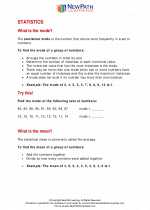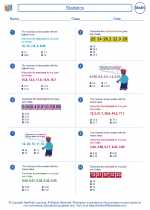Addition
Addition is the mathematical operation of combining two or more numbers to find their total sum. It is represented by the plus sign (+).
Basic Addition
When adding two numbers, simply line up the numbers according to their place value (ones, tens, hundreds, etc.) and then add each column starting from the rightmost digit (ones place).
Example:
123
+ 456
------
579
Carrying Over
When the sum of a column exceeds 9, you "carry over" the extra digit to the next column on the left.
Example:
59
+ 36
------
95
Associative Property
Addition follows the associative property, which means that the grouping of the numbers does not affect the sum. In other words, (a + b) + c = a + (b + c).
Commutative Property
Addition also follows the commutative property, which means that the order of the numbers does not affect the sum. In other words, a + b = b + a.
Study Guide
- What is addition?
- How do you perform basic addition?
- When do you carry over in addition?
- What is the associative property of addition?
- What is the commutative property of addition?
◂Math Worksheets and Study Guides Fifth Grade. Statistics

 Worksheet/Answer key
Worksheet/Answer key
 Worksheet/Answer key
Worksheet/Answer key
 Worksheet/Answer key
Worksheet/Answer key
